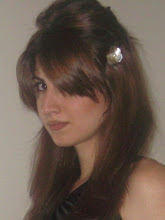Artist Mary Cassatt
Style Impressionism

In Little Girl in a Blue Armchair, Mary Cassatt demonstrates her powers of observation in showing her young subject sprawled in a large, blue armchair. The smartly dressed little girl fidgets; in the next chair is her sleeping dog. The girl's pose has the naturalism of childhood that would later characterize many of Cassatt's paintings of children.
Mary Cassatt's paintings and graphics depict the world of nineteenth-century women, mothers, and children. Her exploration of intimate domestic life is informed by an unsurpassed ability to capture the natural, sometimes awkward poses of her figures. She avoided appealing to sentimentality by refusing to "prettify" her subjects, instead employing natural expressions and un-idealized models. Little Girl in a Blue Armchair represents the characteristic restless posture of a child in an oversized, adult chair, captured in a composition that is remarkable for its brilliant color and striking design.
Cassatt's strong colors and energetic brushwork mark her connection with the French impressionists. (Impressionism - A movement among late nineteenth-century French painters who sought to present a true representation of light and color. Working primarily outdoors, such artists applied small touches of paint to catch fleeting impressions of the scenes before them. Many American artists adopted the style.)
In style and subject matter, her art is close to that of Degas and Edouard Manet. Degas, in fact, made suggestions about the composition of this painting and reworked parts of its background. In Cassatt's pictures, light does not dissolve form. Instead, objects retain their mass and coherence with light enhancing their physical presence.
In the nineteenth century many artists were experimenting with subjects that formerly had been considered minor or unacceptable. Inspired by the realist imagery of painters Gustave Courbet and Édouard Manet, and the writings of Emile Zola and Gustave Flaubert, young artists rejected the conventional idea that serious painting had to illustrate a strong underlying moral or ethical theme. Instead they chose to record the world as they viewed it, depicting their surroundings and contemporary life in the city and countryside. Mary Cassatt's images of women and of children are a part of this broad movement in art and literature to represent aspects of everyday life in the second half of the nineteenth century.
A new approach to painting paralleled this emphasis on contemporary subjects. Academic artists had used a sober palette, with a variety of neutral and dark tones. They applied their paint in carefully blended brushstrokes that resulted in a widely admired, smooth, enamel-like surface. The Impressionists believed that bright color and broad, obvious brushstrokes were more appropriate in conveying the shimmering effects of outdoor light, and in capturing the immediacy of everyday life. Cassatt painted her early Salon submissions in the darker tones of the old masters, but under the influence of the Impressionists, her palette brightened noticeably.
Cassatt painted this canvas shortly after she first came into contact with the Impressionists. In fact, Little Girl in a Blue Armchair may have appeared in the 1879 exhibition under the title Portrait of a Young Girl. The brilliant color and bold, loosely handled brushstrokes are characteristic of her work at this time. Note the confident brushwork in the foreground chairs and in the little girl's outfit. Details of texture are not meticulously defined, but instead are suggested by the rapidly applied brushstrokes. The immediacy suggested by the handling of the surface is accentuated by the novelty of the composition.
Pictorial structure and clarity are the foundation of Cassatt's art. Under Edgar Degas' tutelage, she began to collect and study Japanese prints; their patterns and asymmetric designs greatly influenced her work. Here she placed the girl, the focus of the composition, off-center. The armchairs form a pattern encircling an oddly shaped patch of gray floor in the middle of the picture. As in Japanese art, the forms are tilted up, and the edge of the canvas crops the image. Many artists were influenced by the dramatic non-western perspective, strong colors, and arbitrary cropping found in the inexpensive woodblock prints. The impact of Asian art on nineteenth-century painting is evident in the way part of each chair is deliberately sheared off at the frame.
This painting shows the girl is in her private world with petulant boredom. The unusual perspective may have been influenced by her recent friendship with Degas. The sofas are treated in a painterly blue with pattern, and unlike the Salon, which portrayed children with sweetness; this child is allowed to be herself. Cassatt wrote, "I love to paint children. They are so natural and truthful."
"Viewing Kate Chopin's "The Story of an Hour" Through Mary Cassatt's Impressionist Lens"
Mary Cassatt, nineteenth-century American Impressionist, combined realistic detail with obvious artistic technique to represent penetrating psychological glimpses into women in domestic interiors; Kate Chopin, nineteenth-century American realist writer, incorporated some of the same representational techniques to narrate "a truly remarkable tale about a subdued wife's vision of living only for herself" (Seyersted 57). Cassatt's treatment of color, space, and gaze in Five O’clock Tea and Little Girl in a Blue Armchair provides a lens for viewing spatial and sensory images in Kate Chopin's "The Story of an Hour." In picturing female subjects, Cassatt employed impressionist spatial conventions and reversed the male gaze to provide nontraditional impressions of women, much as Chopin employed space and belied the male guess in her "experimental" tale. Thus, Cassatt's constrained colors and spaces make visible the physical and emotional constraints that Louise Mallard suffers in Chopin's "most startling picture of female self-assertion" (Seyersted 111).
http://cache.search.yahoo-ht2.akadns.net/search/cache?ei=UTF-8&p=Girl+in+Blue+Armchair+by+cassatt+point+of+view&y=Search&fr=yfp-t-501&u=wssa.asu.edu/pdf/abstracts/women.html&w=girl+girls+blue+armchair+cassatt+%22points+of+view%22+%22point+of+view%22+pointofview&d=FKZEAS72Q-In&icp=1&.intl=us
http://www.nga.gov/education/schoolarts/cassatt.htm
http://www.nga.gov/collection/gallery/ggcassattptg/ggcassattptg-61102.0.html






